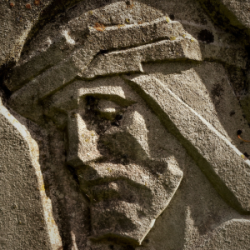(Read this series from its beginning here.)

In Matthew 15:21-28, Jesus had retreated to the two ancient Phoenician cities of Tyre and Sidon for respite. While there, he was met by a woman described as Syro-phoenician: a Greek, born in Syrian Phoenicia (Mark 7:26). It is the “Syro” part that the gospel authors desire to emphasize. This woman, being from Syria, would have been of Seleucid decent. Syria was the name Rome used for the Seleucid Empire. This matters because these were the ancient oppressors of the Jewish people before Rome. Under the influence of Antiochus Epiphanes, the Seleucids had sought to exterminate the Jewish people, and although Seleucids and Hebrews now shared the same fate under Rome, they had once conquered and occupied the Hebrew people. Jesus’ exchange with this woman happens when this was not yet distant history for the Jewish people.
Syrophoenician Woman
The encounter is set up to prick readers’ sense of justice. Jesus emerged within Jewish society and taught the liberation of the oppressed. But here was someone outside of Jewish society who was associated with Gentile oppressors who was asking him to liberate her daughter too!
What we are encountering in this story today would be called intersectionality. Intersectionality is a way of describing the relationships between systems of oppression, domination, and discrimination. The model, first developed by Kimberlé Crenshaw, describes oppression as an interlocking matrix and helps us to examine how biological, social, and cultural categories such as gender, race, class, ability, sexual orientation, religion, caste, species and other axes of identity interact on multiple and often simultaneous levels and so contribute to systematic injustice and social inequality. The woman in this story lived in multiple social locations that not only intersected in her oppression but also connected to the oppression of Jewish people.
Using the language of Matthew 7, Jesus questions her, “Is it right to give the children’s bread to the dogs?”
I have heard this explained in two ways. One explanation is that Jesus is merely play-acting to teach the on-looking disciples an important lesson in generosity. The other explanation, which I think is more plausible and more valuable. And we’ll discuss this second interpretation, next.













